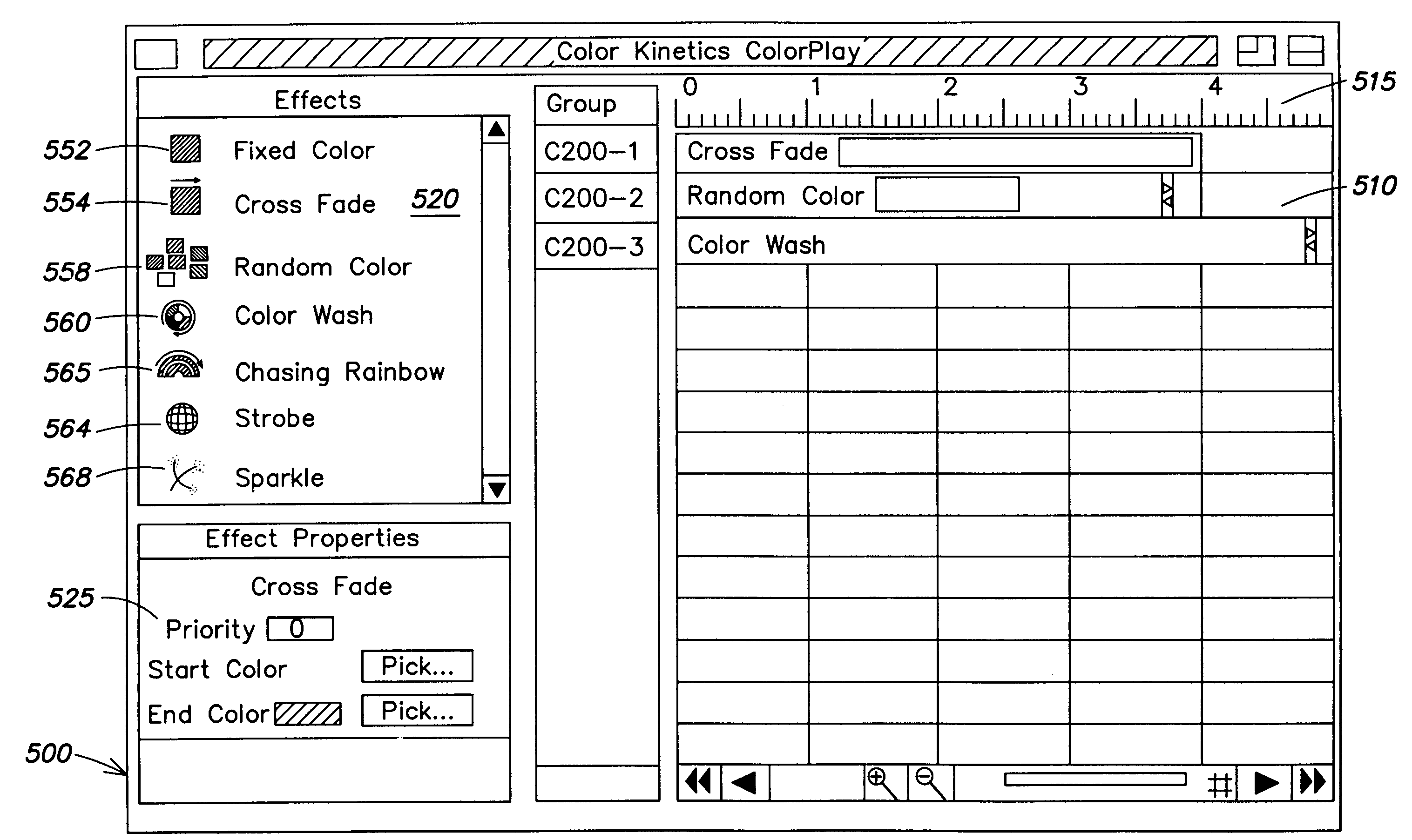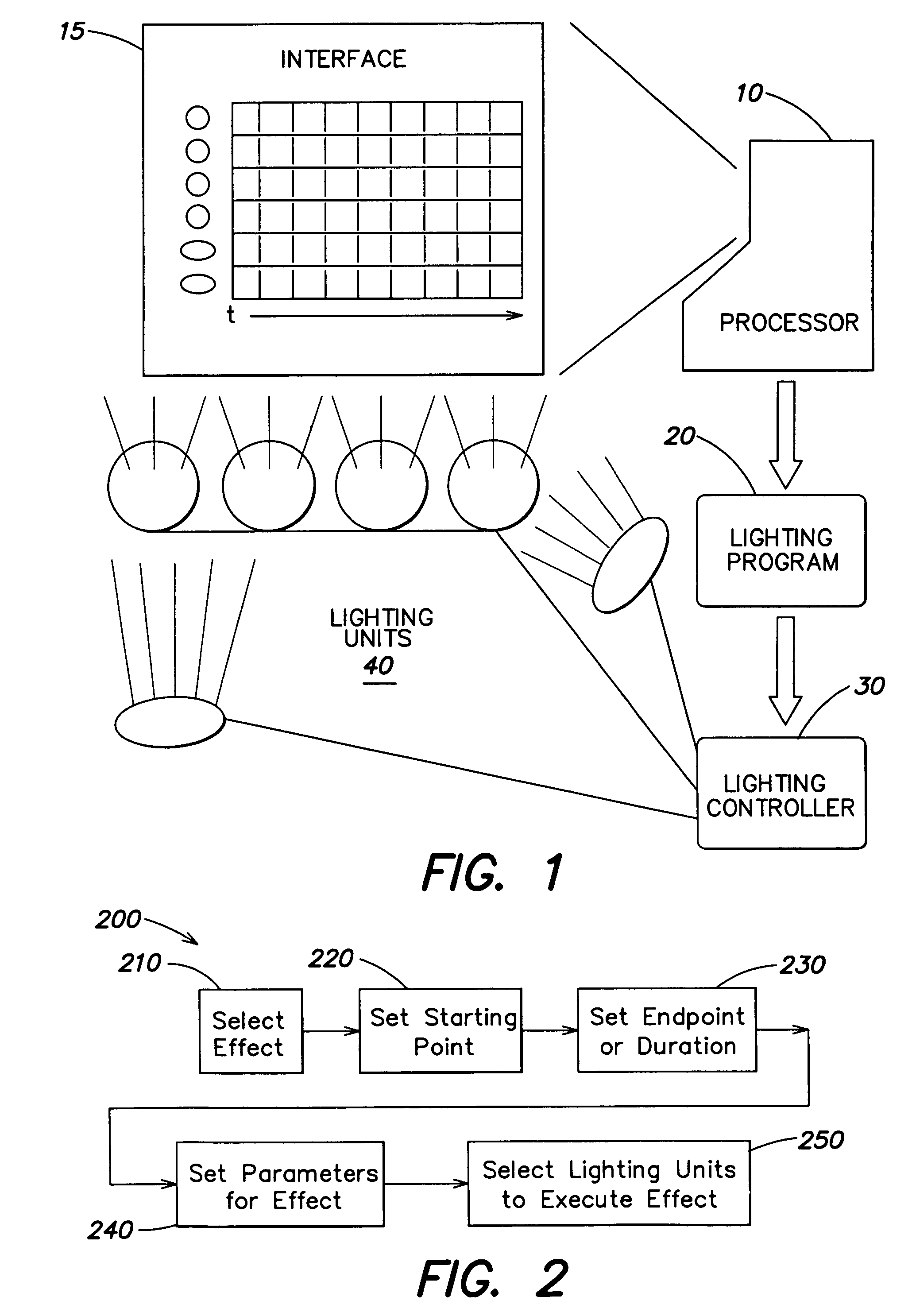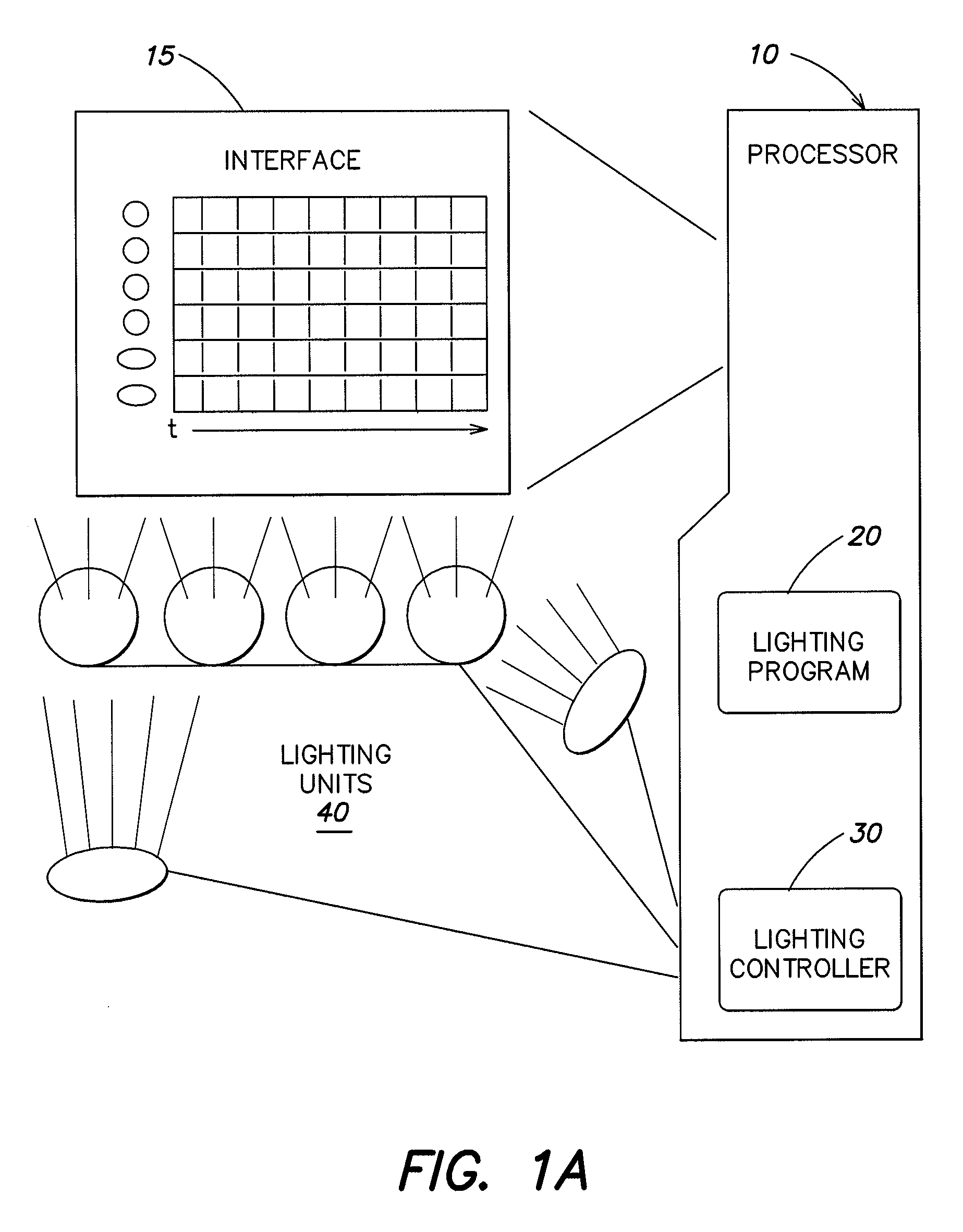Systems and methods for authoring lighting sequences
a lighting sequence and lighting technology, applied in the field of lighting sequence authoring systems and methods, can solve the problems of increasing the effort and time involved in creating an effect, requiring considerable reliance on chance, and requiring a large amount of manual control
- Summary
- Abstract
- Description
- Claims
- Application Information
AI Technical Summary
Benefits of technology
Problems solved by technology
Method used
Image
Examples
example 1
[0107]
/ / An example sequence. / / Runs one strip of 12 cove lights, sequentially numbered starting at address 1 / / Input #1 is a binary switch / / The cove runs a continuous color wash / / When the switch is opened, a chaser strobe effect is triggered, which / / runs a white strobe down cove. The effect won't be repeated until the switch is reset.import java.sequence.*public class ExampleSequence extends Sequence {private int CoveGroup[] = {LightToDMX(1), LightToDMX(2), LightToDMX(3),LightToDMX(4), LightToDMX(5), LightToDMX(6),LightToDMX(7), LightToDMX(8), LightToDMX(9),LightToDMX(10), LightToDMX(11), LightToDMX(12)};public String getSequenceInfo( ) {return “Example sequence version 1.0”;}public Effect init( ) {super.init( ); / / Call base class init / / Create the effect objects with the appropriate variation paramswashEff = new WashEffect(1, / / IDCoveGroup, 1, 1, / / Which lights, universe 1, priority 1true, / / Direction = forward20000); / / Speed (20 seconds)strobeEff = new ChaseStrobeEffect(2, / ...
PUM
 Login to View More
Login to View More Abstract
Description
Claims
Application Information
 Login to View More
Login to View More - R&D
- Intellectual Property
- Life Sciences
- Materials
- Tech Scout
- Unparalleled Data Quality
- Higher Quality Content
- 60% Fewer Hallucinations
Browse by: Latest US Patents, China's latest patents, Technical Efficacy Thesaurus, Application Domain, Technology Topic, Popular Technical Reports.
© 2025 PatSnap. All rights reserved.Legal|Privacy policy|Modern Slavery Act Transparency Statement|Sitemap|About US| Contact US: help@patsnap.com



